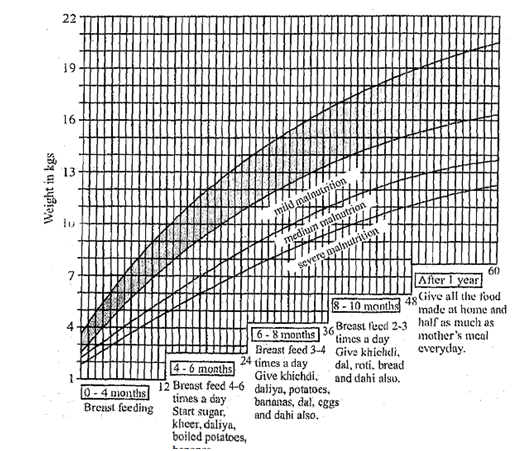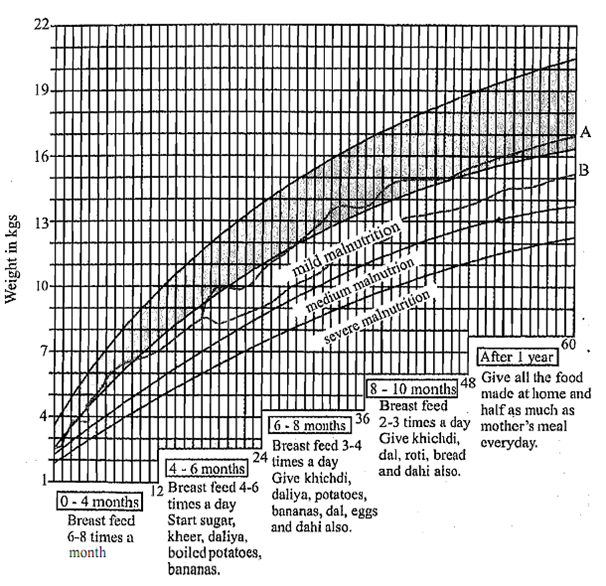What is Growth Monitoring?
In third world countries, about half the children are short and underweight for their age. Inadequate nutrient intake is the main reason. Inadequate nutrient intakes occur due to a number of causes. Although breast-feeding is universal in India, many mothers do no not exclusively breast feed their infants during the first six months. Introduction of foods, other than breast milk earlier than 6 months of age, often prepared under not very satisfactory hygienic conditions, causes diarrhoea and malnutrition in the children. Introduction of appropriate complementary foods in adequate amounts is often delayed to one year and beyond. As amount of breast milk secreted reduces after 6 months of lactation, sole reliance on breast milk beyond this period is inadequate and the child develops malnutrition. Growth monitoring is a tool that helps to identify growth altering at an early stage and helps to institute corrective measures so that malnutrition can he avoided. What is growth monitoring?
In growth monitoring, weight is plotted against age accurately on the growth chart. Refer to Figure which is a growth chart used in a health centre. Growth charts are available with all paediatricians, health workers, anganwadi worker and health centers. The growth chart depicts vaccination schedule, birth history, general guidelines, disease history and one year weight record with guidelines of infant feeding, as you may have noticed in Figure. These growth charts are recorninended to regularly record weight, height etc, till 6 years of age.

Interpretation of growth charts is very important for any health and nutrition professional. The upward curve indicates weight gain while flat curve indicates no weight gain. The downward curve indicates weight loss and is not desirable. Let us understand the concept of growth curve and how to interpret them with the help of an example.
Refer to Figure which depicts the growth pattern (A and B) of two infants. From the growth pattern depicted in Figure, the growth of a child who is born on lower line of normal weight following trajectory A is most suitable. Why? Because, this moving curve indicates weight gain. The child following trajectory B, on the other hand, indicates growth faltering as the child has deviated from his /her own path. It is important to understand here that every infant should maintain his own growth pattern. As every infant has different birth weight, no weight per se is an indicator of adequate growth. If the child does not maintain that pattern (as indicative in trajectory B), the health worker should investigate medical or nutritional problem impending the predicted growth.

As part of the Integrated Child Development Scheme (ICDS), the anganwadi worker maintains this record of every child and also indicates date of immunization and disease history. Among well-to-do mothers, such cards are handed over to the mother during their postnatal clinics or at the time of discharge after delivery from the health centres/hospitals.